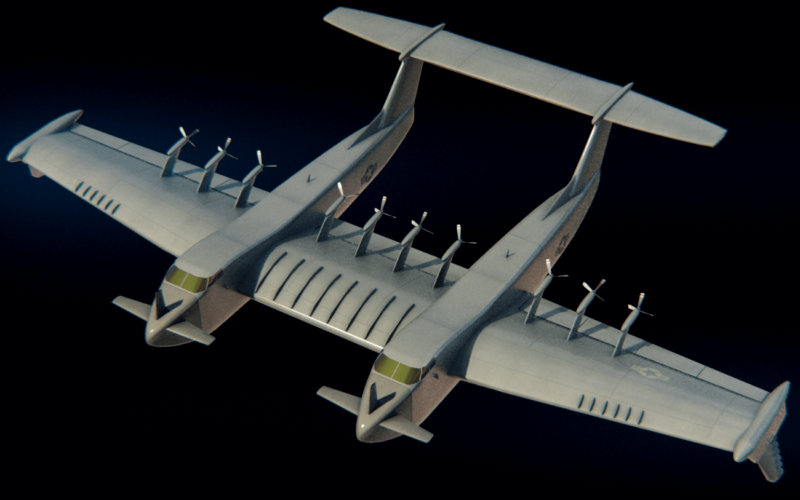DARPA has unveiled the “Liberty Lifter” concept, an aircraft that promises to combine the advantages of the ekranoplan and those of the seaplane.
The Liberty Lifter is designed to be a “long-range, low-cost X-plane capable of seaborne strategic and tactical lift”. The project, presented by DARPA, has a twin-fuselage design reminiscent of the Stratolauch built by Scaled Composites to carry air-launch-to-orbit rockets.
Much like the Soviet-era ekranoplans, the aircraft imagined by DARPA will be capable of highly controlled flight close to turbulent water surfaces, and able to take advantage of the “ground effect,” which results in an increase in lift and a decrease in drag when an aircraft flies at very low altitude. This type of flight also keeps the aircraft below radar coverage for a stealthy insertion in a contested environment.
But unlike the ekranoplans, the Liberty Lifter will also be capable of sustained flight at mid-altitudes and thus will not be restricted to calm waters.
“Emphasis will be placed on operating in turbulent sea states by creating high-lift abilities at low speeds to reduce wave impact load during takeoff/landing, and innovative design solutions to absorb wave forces,” explained DARPA. The aircraft will also be able to “operate at sea for weeks at a time without land-based maintenance activities”.
Such capabilities will negate the need for maritime transport, which is slow and vulnerable to threats such as submarines, and for traditional airlifters that require an operable runway. An aircraft like this could become an asset in disputed maritime sectors such as the South China Sea or the Arctic Ocean.

